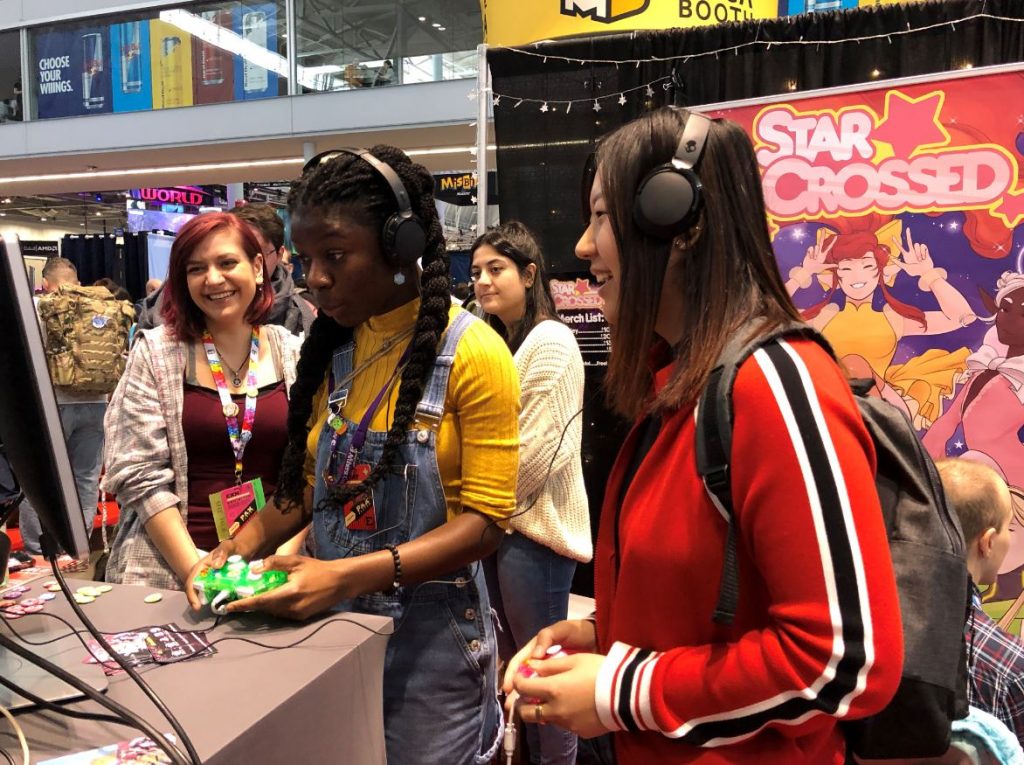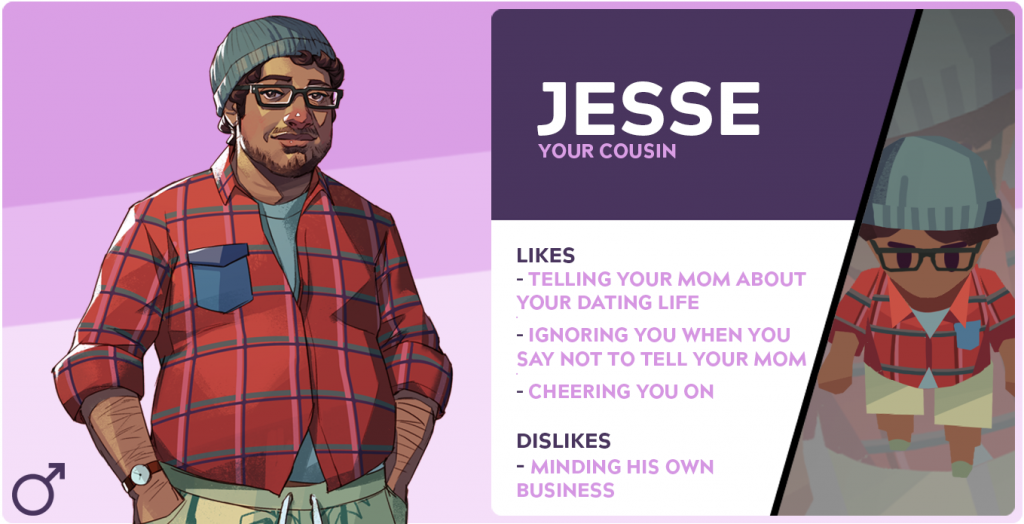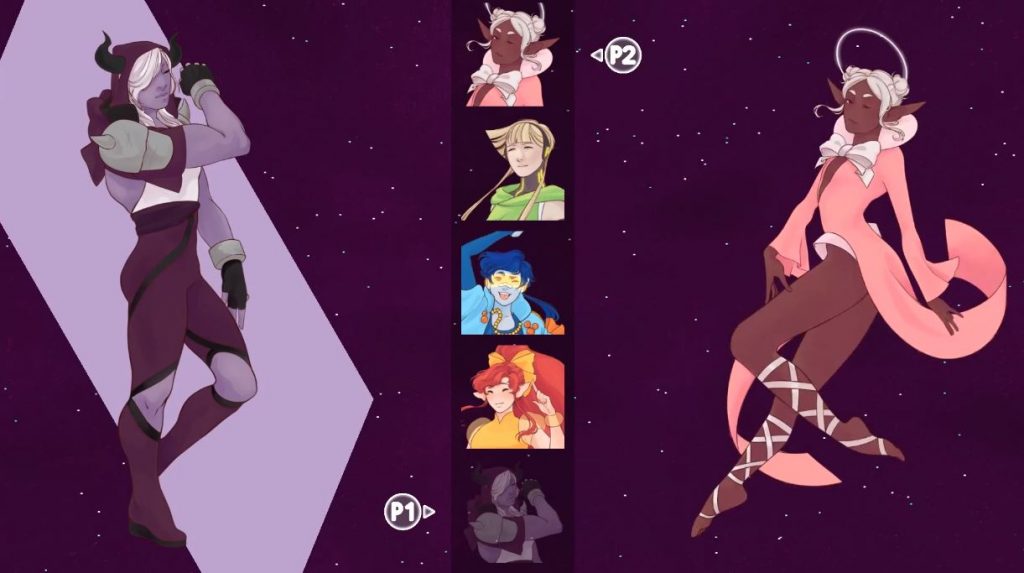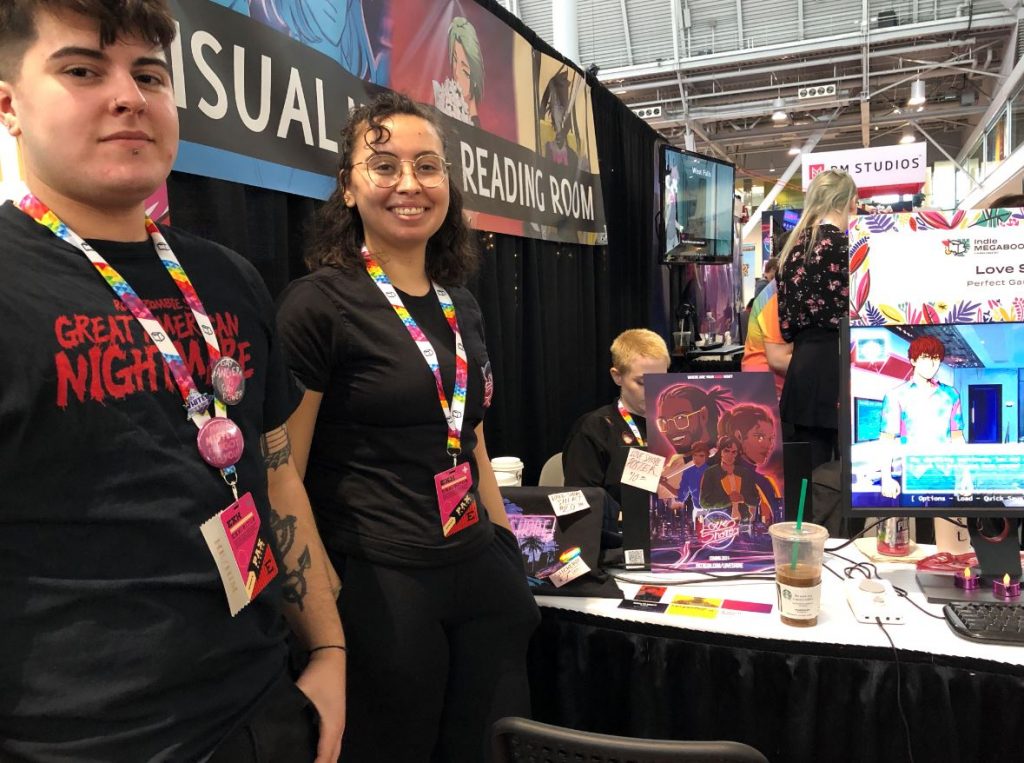
There’s Still No Right Way to Advertise Your Queer Game
Trying to cover games that include queer characters, themes or even something that acknowledges not everyone in the world is heterosexual, especially for a specialized outlet like Gayming Magazine can be tough. Not because there aren’t games to see and people to talk to that are relevant to your coverage, but if you’re covering an event, you’ll spend most of your time wading through emails looking for games that include queer characters and themes. It can be difficult because that’s not something a lot of games go out of their way to advertise. And if they do, it can come off like tokenism or a bullet point that might even be barely represented in the finished product.
When I arrived at PAX, I was able to track down some games to play that featured queer themes. But I was actively looking for these games. That might not be the case for passersby, and not every game that features queerness is upfront with these ideas as say, a dating sim. I talked to a few developers about how they make queer representation apparent to people who might be interested in those kinds of stories and characters, and in having these discussions in the context of a wide spectrum of representation, games, and marketing strategies, it became clear that it is a struggle, regardless of what your game is and who you’re attempting to sell it to.
For some games, getting across queerness at a glance is easier than it is for others. Kitfox Games’ Boyfriend Dungeon, the dating sim and dungeon crawler mashup, says it’s about romance in the name. According to Communication Director Victoria Tran, the title was decided upon based on its ability to capture people’s attention, even if it’s become less applicable to the game as development has gone on, as datable characters aren’t restricted to men, there are women and nonbinary romance options, as well.
“The interesting thing about Boyfriend Dungeon is it’s kind of a ridiculous name, so no matter what, straight or not, you’re checking this out like, ‘what the hell is that?’ Then you hear more of that, then it captures your attention,” she said. “So it’s not like a thing where it’s blatant that you can date other genders in Boyfriend Dungeon, because it just says Boyfriend Dungeon. But the fact that it’s ridiculous enough that it makes you want to listen more kind of helps with that.”

Tran says that other titles were up for consideration, including “Bae Blades,” though that might have resulted in some copyright disputes. But ultimately, the weirdness of Boyfriend Dungeon won out, and has given Kitfox Games an easier jumping off point to spotlight queerness. But even now, looking for that requires an extra step in online spaces like Twitter, as promoting characters of different genders specifically by their genders is where things can get messy. But Boyfriend Dungeon’s own website promotes its different love interests alongside gender symbols, but does require that additional click through to communicate that to people.
“Online it’s always the struggle I think, unless you specifically name it that or something,” Tran explained. “Being very clear about all the genders you can date and being inclusive about it has always been a struggle, and I wish I had an answer to it.”
Boyfriend Dungeon’s dating sim elements give it a foot in the door, but for games like StarCrossed, which has an entire mechanic centered around shipping its female and nonbinary cast, making that readily apparent to someone walking by at a convention isn’t quite as easy. Francesca Carletto-Leon, the producer and narrative designer of the game, says that while people on the PAX East showfloor can take notice once they’ve played the story sections of the arcade action game, the team at Contigo Games has had to make it clear when engaging with the media.

“I think that’s something that has been difficult,” she said. “Generally like, if people see it in our media and in the materials we’re presenting, then they always come chat with us about it and we’re able to have that conversation. I think people understand from the get go, even from the mechanics it’s very much implied. Even all the gameplay is centered around two characters and them working together and cooperating. But when we reach out to media and press it’s usually something we have to explicitly state that ‘this is one of our design intentions and something that we really value as a team.’”
For Contigo Games, the studio does try to make those same values apparent when it attends events like PAX, if not with the sections of the game it showcases, but by including things like pronoun pins to hand out at its booth. But making StarCrossed’s queer relationships explicit in a demo setting has taken a backseat to introducing the overarching conflict and its cooperative loop first and foremost.
“A lot of players, when we do demo, they play arcade mode, which is much more narrative light, or they just play the intro, which is just introducing the characters and the team that they’ll be interacting with,” she said. “And a lot of players, if they’re not specifically looking for that sort of content, they will not initially get it just from the intro because those relationships do take time to develop because it’s something that happens through gameplay.”

But what about games where queer identity and relationships isn’t really the point, but it still runs through the coding that makes up a game? That’s the situation for Garden Story, an RPG by Picogram where all of its characters are nonbinary and referred to with they/them pronouns. While Picogram admits this choice has made some of the game’s dialogue unclear in some demo environments (which they say they’re working to remedy as development continues), the reactions from the players who have picked up on it have been worth the implementation.
“Most people honestly don’t notice, but a few have,” they said. “Anyone who has is incredibly supportive of it. Actually, there’ve been a few times that it’s caused some dialogue confusion. I have to be really careful about how villagers are referred to now, though it’s well worth the effort.”
As for how you communicate something that’s, to some extent, hidden within dialogue, to a wider audience without them having to pick up a controller and play, Picogram says that’s less important to them than conveying themes evocative of queer communities.
“The themes in Garden Story are no stranger to most queer people,” they said. “Community, tenderness and empathy, isolation. Growing up queer, that’s something that incorporates all of those things. And integrating those in a way that encourages a positive outlook is a struggle, to say the least. But I know it’s the outlook that a lot of queer media desperately needs these days.”
Beyond Garden Story, Picogram says the notion of using queer identity as a kind of bullet point on a marketing campaign is something they think comes less from queer creators, and instead from studios who attempt to represent these themes and characters without firsthand knowledge or consultation.
“I have to make it really clear that most of the difficulty that I see within studios is people trying to represent those identities without first-hand experience,” they said. “You want to market the queerness of a fictional character? You want accuracy in your narrative? Hire queer creators and let them make the relevant decisions from the start. Anything less than that is lacking, and would definitely qualify as some level of tokenism.”

On the opposite end of the spectrum is Love Shore, which actively uses the word “queer” in its introduction to establish itself as an inclusive game at the outset. Co-writer and co-producer Emmett Nahil says this is part of the game’s unapologetic approach to its representation, as it treats queerness of any kind as the default.
“When we were talking about it, we tried to build it into the introduction,” he said. “We say ‘queer, cyberpunk visual novel.’ It is a bullet point, but it gets across the fact that it’s queer and that we also value aesthetics and genre too.”
Son M., also co-writer and co-producer, said figuring this particular problem out has been an issue they’ve dealt with for a long time in their career, but hopes their inclusive body of work has made it clear to people on the outside that it always will come with a queer perspective, and that it doesn’t always have to be blatantly told to people.
“That is like, my biggest peeve,” they said. “I always struggled because a lot of the work we do, all our characters are LGBT+ automatically. We only write from the queer perspective because we’re queer. It’s hard to just say ‘yes, we’re all these things and also queer’ and have it as a tagline. There’s some times no other way to get someone to play other than by saying ‘play this game, it’s queer.’ But our options are only queer. You can only play as queer characters.”
All of these approaches differ from the way many large corporations approach the subject. From instances in games like Blizzard tweeting out that a character is gay for clarification to movies where Pixar lets everyone know its first queer character in a movie is coming while on press tours, the bigger the company, the less tact people tend to have when it comes to letting people know their work is inclusive.
While not one developer I spoke to is going about it the same way, it’s clear that everyone I spoke to understood that this is a balancing act, and it’s worth giving just as much care as promoting your game’s mechanics or story. My takeaway from speaking to these passionate people about this is that we as an industry still haven’t nailed down a singular way that is best is to treat queerness as more than a bullet point, but I’m at least confident now that there are plenty of people in positions to try that are willing to find out.







